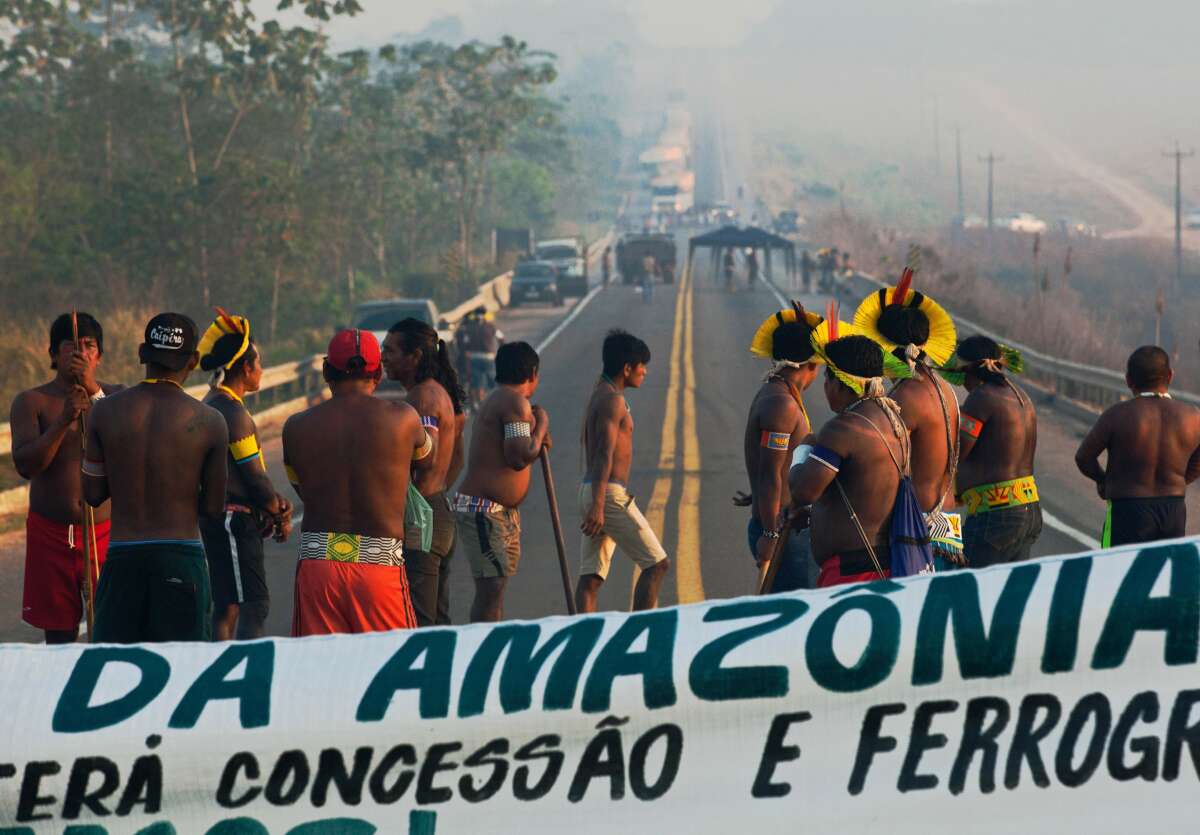This story was originally published by Grist. You can subscribe to its weekly newsletter here.
Indigenous territories and protected areas in Brazil’s Amazon forest see higher and faster rates of deforestation than unprotected areas. That’s according to a new study in Nature that says despite an expansion of protected areas and increased recognition of Indigenous territory across 52 percent of the Brazilian Amazon from 2000 to 2021, forest loss has increased in those areas at an alarming pace.
“Brazil has made good progress in terms of how much protected areas have grown, but Indigenous territories and protected areas need more resources if we want them to maintain their capacity to strengthen forests,” said Xiangming Xiao, a University of Oklahoma biology professor and the report’s primary author.
Between 2000 and 2021, roughly 27 million hectares of forest in non-protected areas in the Brazilian Amazon were lost. However, between 2018 and 2021, the relative rate of gross forest loss was higher in protected areas and Indigenous territories, nearly double that of non-protected areas. That increase, the report says, is likely related to economic development and loosening of environmental conservation policies championed by former president Jair Bolsonaro’s administration beginning in 2019.
“Indigenous lands and protected areas are vulnerable in a different way from the non-protected areas,” Xiao said. “The forest in these areas are mostly primary forest. They have more biomass, more biodiversity, and if they are lost that will have a disproportionate impact in terms of biodiversity, conservation, and carbon storage.”
Between March and September 2020 alone, Brazilian legislators passed 27 acts that weakened environmental regulations and fines for violating conservation laws dropped by 72 percent in the same period. Under the Bolsonaro regime, mineral prospecting and mining increased with applications currently pending for roughly 100 million hectares with nearly 20 percent of those applications in protected areas, Indigenous territories, or regions with strict conservation regulations. Nearly half a dozen proposed bills could reduce federal authority over protected areas and loosen constraints on economic activities in Indigenous lands.
In 2020, satellite data revealed record highs in illegal mining and primary forest loss. The report says COVID-19 has also had impacts, hitting Indigenous communities hard and making it easier for illegal loggers and miners to encroach on their land. Currently, the Brazilian Supreme Court is trying a case that could limit what lands can be identified as Indigenous — allowing only areas possessed by Indigenous peoples in 1988 to be granted ownership.
The study also shows that not all protected areas are created equally. Strictly monitored protected areas lost more forest than protected areas that were designed for sustainable use, where humans are allowed to live and work. Xiao speculates that even though areas with strict protections are expected to be better preserved, they might have different systems and less capacity to deal with the pressures of industry growth, COVID-19, and economic development over the past few years.
But the more interesting part, Xiao said, is showing that protected areas designed for sustainable use are still effective.
“Sustainable use is good and effective for conservation,” Xiao said. “That raises a question in how we address forest conservation and human development. It shows we maybe want to build protected areas that carefully consider how to fit the needs of people in that area. Protection must balance the needs [of the forest and of people].”
Xiao says Brazil’s recent presidential election could herald tighter forest regulations. The satellite images used in the report show fluctuations in the country’s deforestation rates that parallel changes in administration. The period of least deforestation, roughly 2004 to 2010, coincides with president Luiz Inácio Lula da Silva’s first administration, which prioritized conservation in the Amazon. With his return to office and recent environmental initiatives, including selecting the Indigenous leader Sônia Guajajara, of the Guajajara tribe and born on Araribóia land, to head up a new Ministry of Indigenous Peoples, Xiao says Lula da Silva’s history of strong environmental policy may lead to reduced deforestation.
“There will be challenges of course,” Xiao acknowledged. “But we’re already working with satellite data from 2022 and will see how governments and policies impact conservation. We’ll be able to see whether they help or not.”
Join us in defending the truth before it’s too late
The future of independent journalism is uncertain, and the consequences of losing it are too grave to ignore. To ensure Truthout remains safe, strong, and free, we need to raise $34,000 in the next 72 hours. Every dollar raised goes directly toward the costs of producing news you can trust.
Please give what you can — because by supporting us with a tax-deductible donation, you’re not just preserving a source of news, you’re helping to safeguard what’s left of our democracy.
